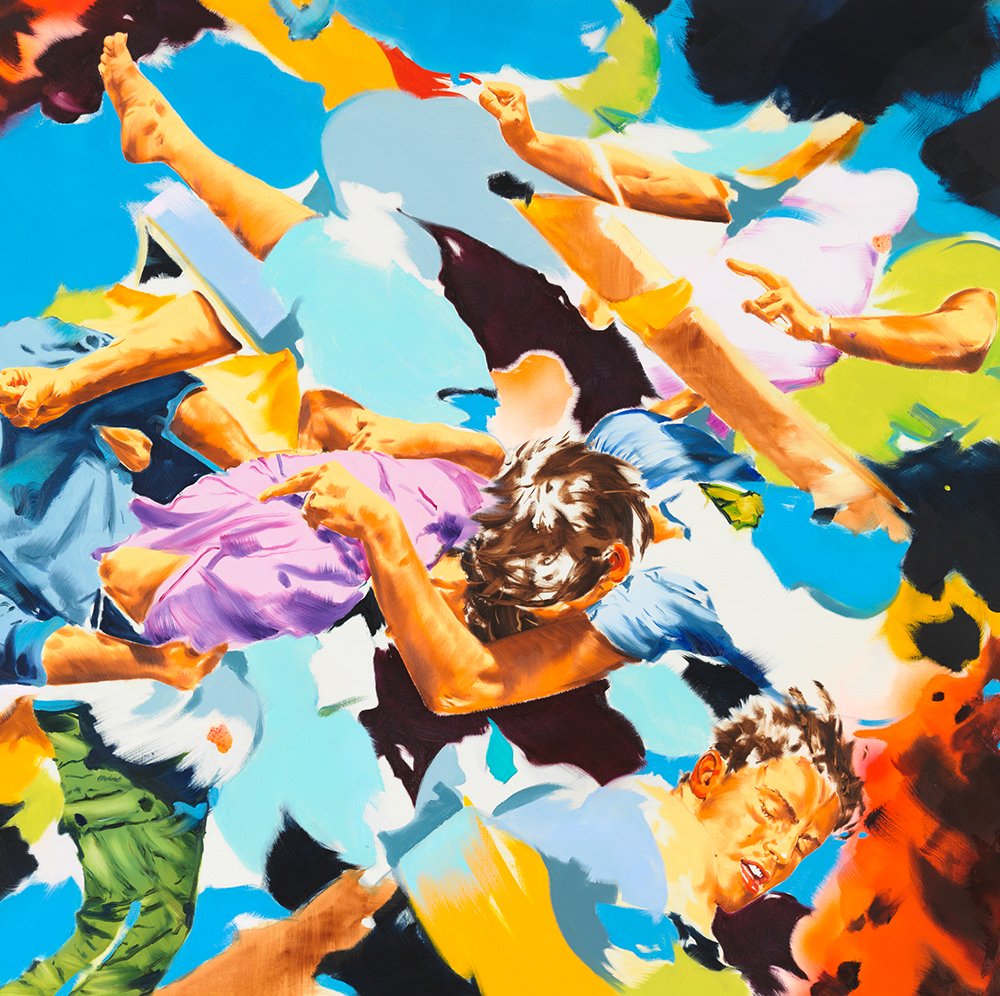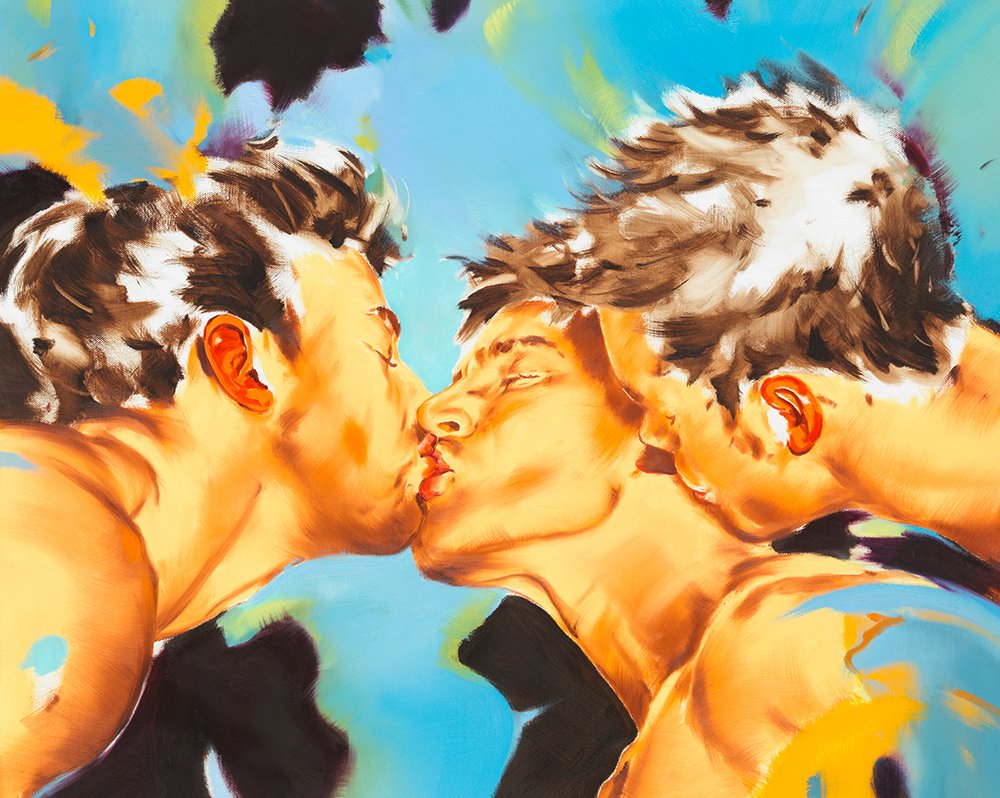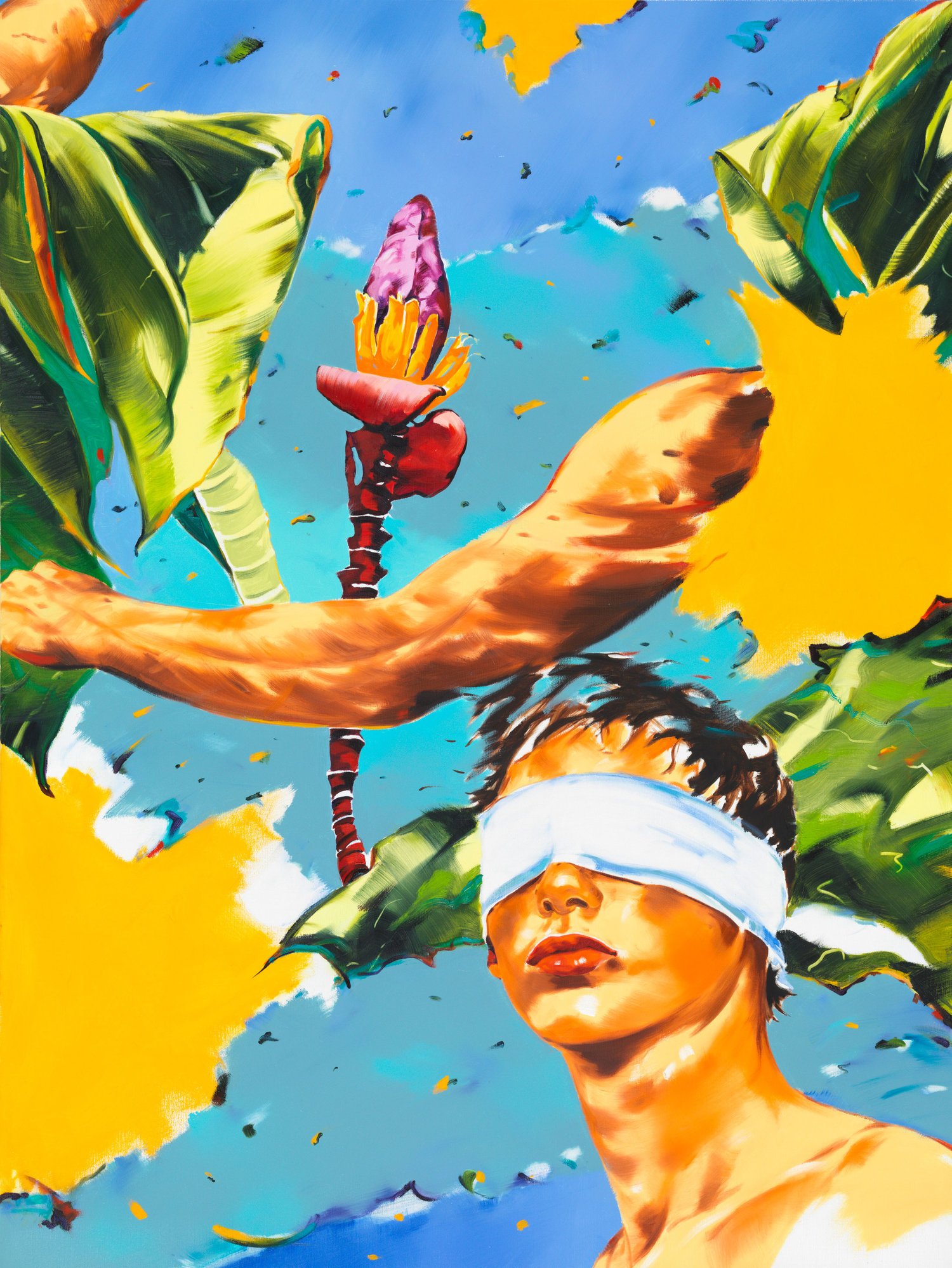Norbert Bisky
Norbert Bisky
Interview Isabella Rhein & Caroline Gettler
Photography Caroline Gettler
First of all we would like to talk about your current exhibition “Anomie” at König Galerie in London. What does Anomie signify to you? How would you define the term?
Hearing the word you feel like you want to scratch yourself nervously on the shoulder. Something is not right. In the beginning of this year I had an encounter with anarchists. I visited an exhibition in an old concrete bunker here in Berlin, which deals with the historical situation in Germany between 1920 - 1930 and the socio-political situation before the Nazis. I came across the persona Marinus von der Lubbe who played a significant role in the history of Germany. He was a young anarchist, crazy and gay, who was executed when he was just 25 years old for putting the Reichstag on fire. The event was the main reason for the Nazis to persecute communists, socialists and priests.
In general, I’m not a political person, but we currently find ourselves in a new situation in Germany. For the first time in a long period we have a right-wing populist party in the parliament. They advocate harmful point of views and fight against values, which characterize a city like Berlin. They even wanted to close down Berghain. I grew up in East Berlin. I know how fast things can change. The political situation really moves me at the moment. I am scared of a butterfly effect that would change our living so I engage with certain topics through my art.
Anomie derives from the French and implies that the rules within society get suspended and perpetrated. With my paintings I aim to reflect this current state. Everything is fine, but there are certain people in society who cause disturbance. There is a sense of discomfiture.
So, Anomie has a negative connotation for you?
No, I believe it’s good to break certain rules. I don’t see it black and white. I believe it’s one of the preferences of art, things can be examined on various levels.
Your paintings show dystopian motives, like collapsing buildings and torn bodies, but at the same time your imagery features light colors and soft forms. What’s your intention for the interplay between these contrasts?
Yes, I find myself again and again surprised by many phenomena. Things that look beautiful from the outside but are terrible on the inside. I attempt to create paintings, which I find visually pleasing, but also address the latent dread and discomfort I feel myself every day. I want to catch things on many levels, but I refuse to portray them in a dark, gothic-like aesthetic — rather in a language I find appealing myself. It’s about the aesthetic, which surrounds us every day. We all are aware of the dangers of capitalism, but at the same time it seems sweet and charming from the outside.
Let’s continue to talk about your current exhibition at König London. The installation of your exhibition is impressive, red walls and carpets on the floor. To what extent is the installation of your exhibition important to you. How does it support the message of your art?
It’s very important to me. The first thing I do when I receive an offer for a new exhibition, is to visit the location and then think about how to respond to my first impression. The space at König Galerie London reminded me of a tunnel, a basement room without windows. I wanted to intensify this impression. For me it’s the same process and steps like moving into a new apartment. I painted the walls myself in a lush expressive non-finito way. The red walls create discomfort, a feeling of aggression, which goes hand-in-hand with my paintings. Whereas the carpet is a complex symbol with eclectic meanings.
Your art works address social and political issues. Do you see your atelier as a safe haven in turbulent times?
I wouldn’t consider my atelier as a safe haven. But working here is my purpose in life, that’s why I come here every day. My atelier is very central at one of the hot spots in Berlin. I chose this spot, because I believe it’s vital for an artist to be in a vibrant environment.
Do you think our society is forever lost?
No, I don’t think at all that our society is lost. I’m very optimistic. What I find tough though is big inequality, which is an actual problem. The other day I had a conversation about the issue of world hunger, which decreased over the last years. But hey, there are still almost 800 Million people in the world suffering on hunger. There are certain things in the world, which I deny accepting, like inequality of opportunities, the bondage of movement between countries and landownership. I just refuse to accept the thought that changing things would be impossible.
Do you feel responsible as a contemporary artist to address current social and political issues? Or do you feel free in your creativity?
I feel totally free in my creative process. As I grew up in East Germany I do exactly know what it means not to be free. My only concern is that my work should make sense. My paintings should reflect the present age. It’s almost like I want to put information in a bottle post and close it to preserve witnesses of our time.
We have just talked about a failing society. Does personal failure exist for you?
Christoph Schlingensief once said “failure as chance”. I believe failure is a big word. For sure not everything works out, but failure might be important, because it puts things clear to you. Things which don’t work out might be annoying, but very important in the end. Maybe I wouldn't paint today if there wasn't failure. For me the idea of a linear life, moving straight-lined like on the highway, is bovine and boring.
“Berkeley”
2018, Oil on canvas
“Kiss”
2018, Oil on canvas
Album cover “Homotopia”
for Sam Vance-Law’s debut album
Images Courtesy of
König London







